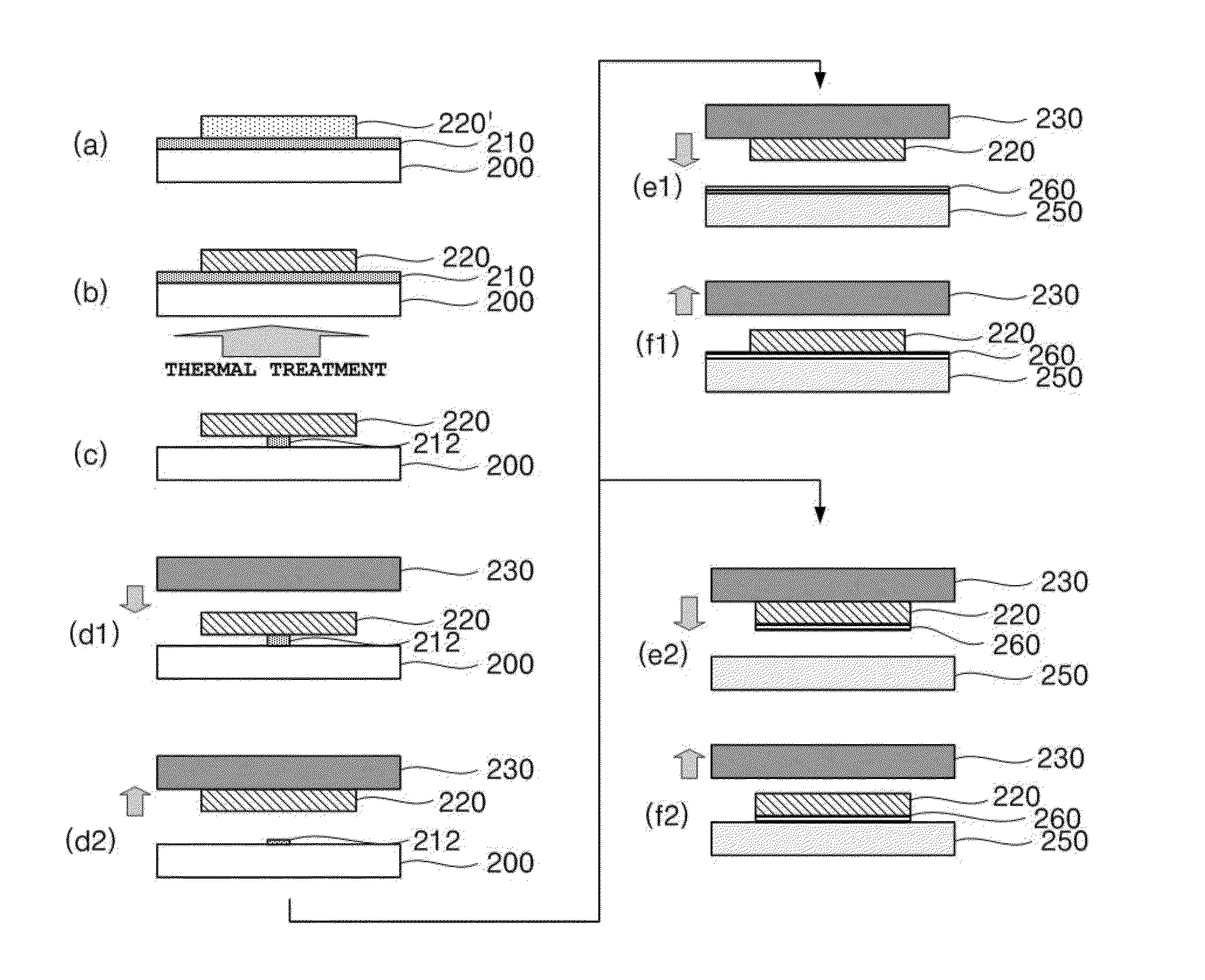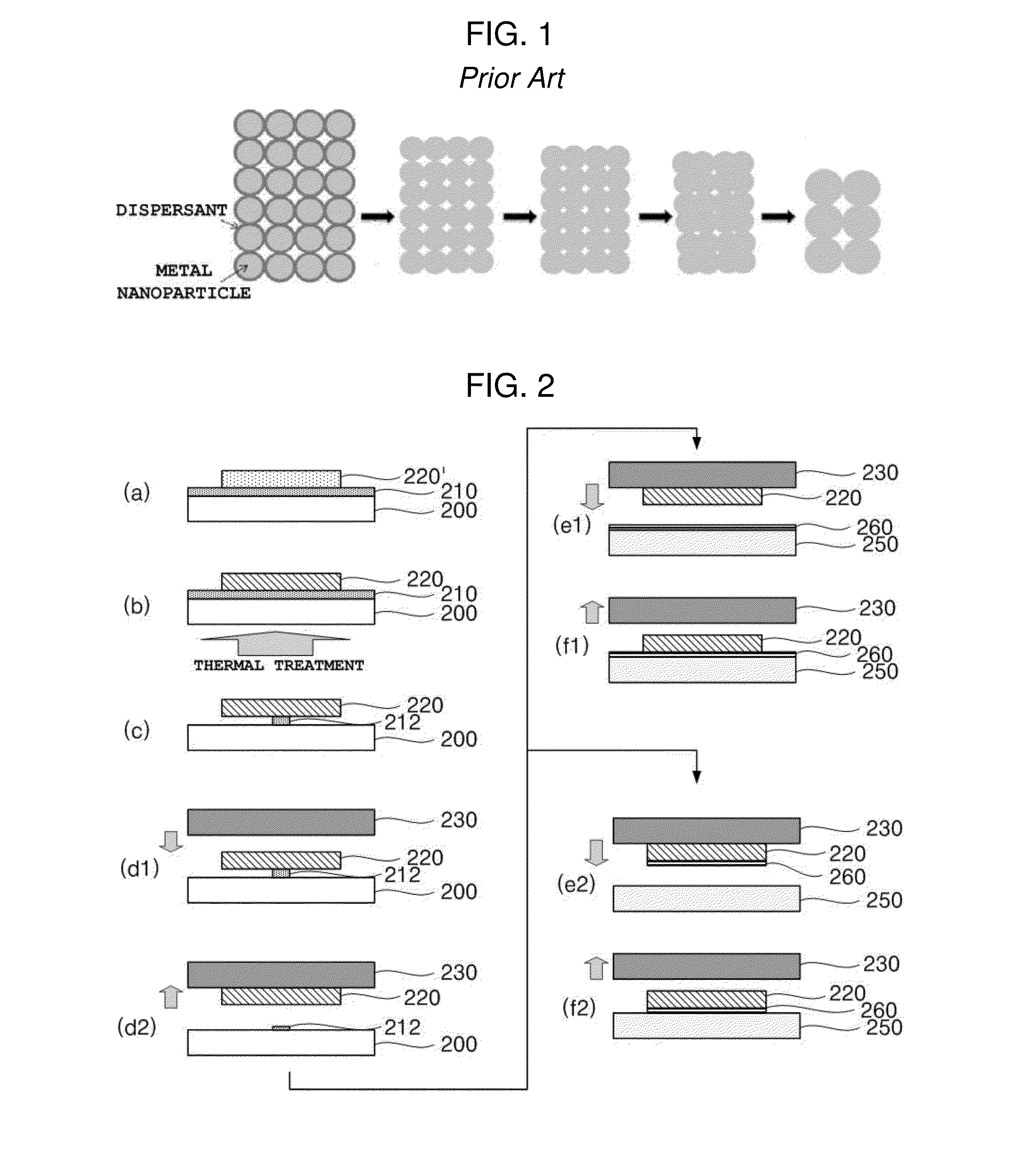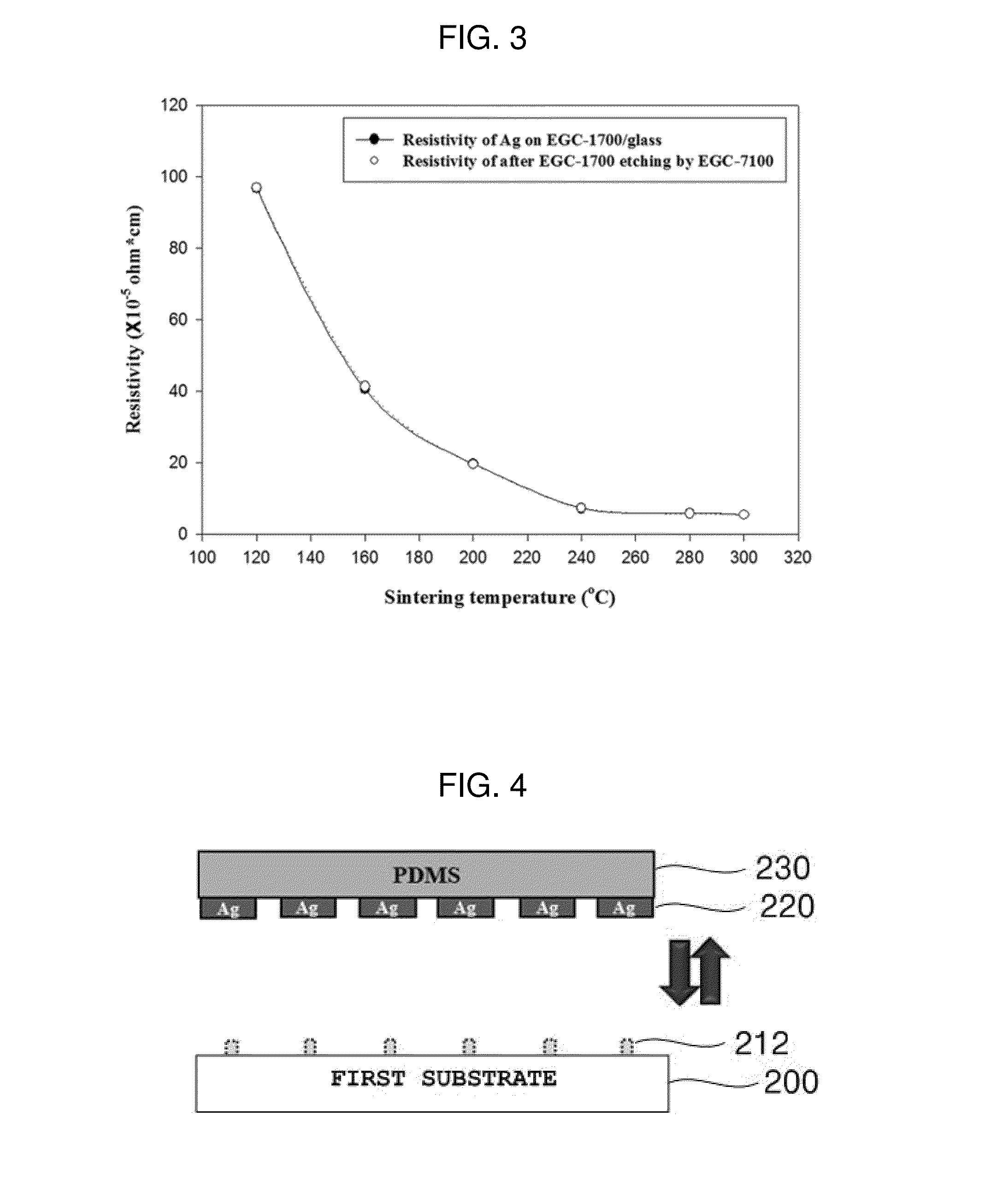Method of forming metal lines having high conductivity using metal nanoparticle ink on flexible substrate
a metal nanoparticle and flexible substrate technology, applied in the direction of cable/conductor manufacturing, conductive pattern formation, microstructural device assembly, etc., can solve the problems of low process reproducibility, poor conductivity characteristics, short process time, etc., to facilitate stamping and high heat resistance. , the effect of high conductivity
- Summary
- Abstract
- Description
- Claims
- Application Information
AI Technical Summary
Benefits of technology
Problems solved by technology
Method used
Image
Examples
first embodiment
[0042]Hereinafter, a metal line forming method according to an exemplary first embodiment of the present invention will be described in detail with reference to the attached drawings. FIG. 2 is a diagram illustrating a sequence of processes of the metal line forming method according to the first embodiment.
[0043]Referring to (a) of FIG. 2, in the metal line forming method according to the first embodiment of the present invention, first, a buffer layer 210 is formed on a first substrate 200, and after that, metal lines are formed by printing a metal nanoparticle ink 220 over the buffer layer.
[0044]The buffer layer 210 may be formed by using a solution having low viscosity and low surface tension and containing fluorochemical acrylic polymers in a hydrofluoroether solvent or a material which is processable in a printing process and an additional etching process. The buffer layer may be formed by using, for example, NOVEC™ 1700 Electronic Grade Coating” (trade name, produced by 3M™).
[...
second embodiment
[0063]Hereinafter, a metal line forming method according to a second embodiment of the present invention will be described in detail with reference the attached drawings. FIG. 8 is is a diagram illustrating a sequence of processes of the metal line forming method according to the second embodiment of the present invention.
[0064]Referring to (a) of FIG. 8, in the metal line forming method according to the second embodiment of the present invention, first, a buffer layer 810 is formed on a first substrate 800 through a printing process, and after that, metal lines are formed by printing a metal nanoparticle ink 820′ over the buffer layer. In the embodiment, the metal nanoparticle ink, the first substrate, and a second substrate are the same as those of the first embodiment. In addition, in the embodiment, a printing process for the metal nanoparticle ink is the same as that of the first embodiment.
[0065]The buffer layer 810 may be formed by using a solution having a low viscosity and ...
third embodiment
[0072]Hereinafter, a highly-conductive metal line forming method on a flexible substrate by using a metal nanoparticle ink according to a third embodiment of the present invention will be described in detail. The metal line forming method according to the third embodiment is different from the first and second embodiments where a flat stamp is used. In the third embodiment, a transfer process is performed by using a stamp having a patterned mold, so that metal lines can be selectively picked up from a first substrate according to a shape of the stamp having the patterned mold in transfer printing.
[0073]The stamp used in the metal line forming method according to the third embodiment is different from the stamps in the metal line forming method according to the first and second embodiments in terms of a shape. FIG. 5 is conceptual cross-sectional diagram illustrating a pick-up process using the stamp 330 having the patterned mold in the metal line forming method according to the thir...
PUM
 Login to View More
Login to View More Abstract
Description
Claims
Application Information
 Login to View More
Login to View More - R&D
- Intellectual Property
- Life Sciences
- Materials
- Tech Scout
- Unparalleled Data Quality
- Higher Quality Content
- 60% Fewer Hallucinations
Browse by: Latest US Patents, China's latest patents, Technical Efficacy Thesaurus, Application Domain, Technology Topic, Popular Technical Reports.
© 2025 PatSnap. All rights reserved.Legal|Privacy policy|Modern Slavery Act Transparency Statement|Sitemap|About US| Contact US: help@patsnap.com



